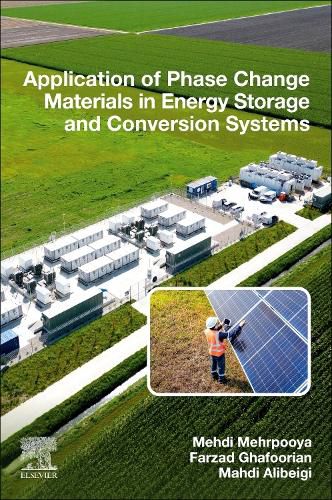Readings Newsletter
Become a Readings Member to make your shopping experience even easier.
Sign in or sign up for free!
You’re not far away from qualifying for FREE standard shipping within Australia
You’ve qualified for FREE standard shipping within Australia
The cart is loading…






Application of Phase Change Materials in Energy Storage and Conversion Systems delves into the use of phase change materials (PCMs) in various energy storage and conversion systems. Starting with an explanation of renewable energy and thermal energy storage, the book comprises thirteen chapters that systematically cover PCM fundamentals and their modeling, design parameters for thermal systems, and factors influencing PCM storage capacity. Additional critical points include the exploration of PCM applications in thermal energy storage systems and buildings, the use of computational fluid dynamics (CFD) for PCM modeling, and optimization techniques for thermal energy storage systems.
This is a comprehensive resource for anyone interested in the theoretical and practical aspects of PCMs. Engineers, researchers, students, and system designers will find this book invaluable for understanding and utilizing PCMs in energy storage solutions.
$9.00 standard shipping within Australia
FREE standard shipping within Australia for orders over $100.00
Express & International shipping calculated at checkout
Stock availability can be subject to change without notice. We recommend calling the shop or contacting our online team to check availability of low stock items. Please see our Shopping Online page for more details.
Application of Phase Change Materials in Energy Storage and Conversion Systems delves into the use of phase change materials (PCMs) in various energy storage and conversion systems. Starting with an explanation of renewable energy and thermal energy storage, the book comprises thirteen chapters that systematically cover PCM fundamentals and their modeling, design parameters for thermal systems, and factors influencing PCM storage capacity. Additional critical points include the exploration of PCM applications in thermal energy storage systems and buildings, the use of computational fluid dynamics (CFD) for PCM modeling, and optimization techniques for thermal energy storage systems.
This is a comprehensive resource for anyone interested in the theoretical and practical aspects of PCMs. Engineers, researchers, students, and system designers will find this book invaluable for understanding and utilizing PCMs in energy storage solutions.